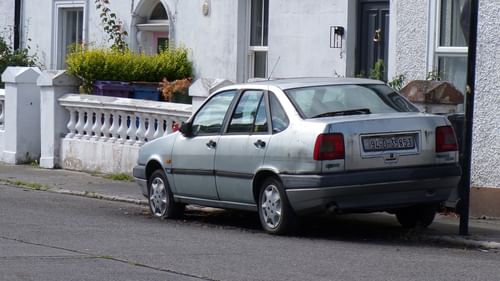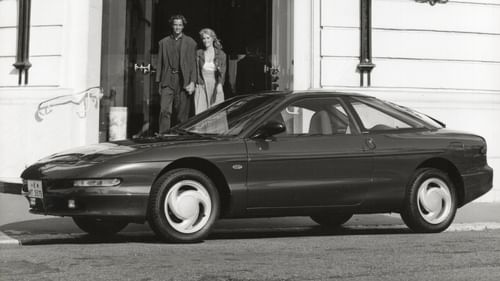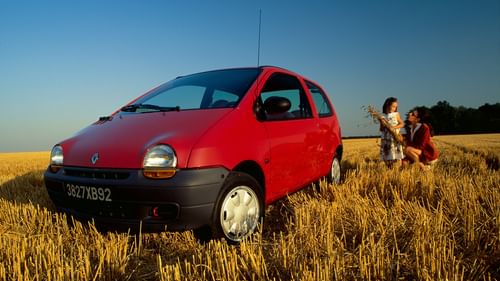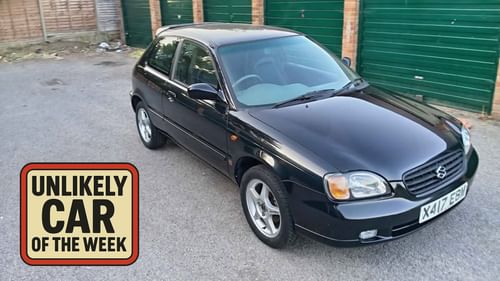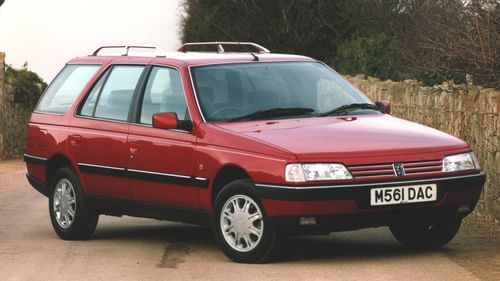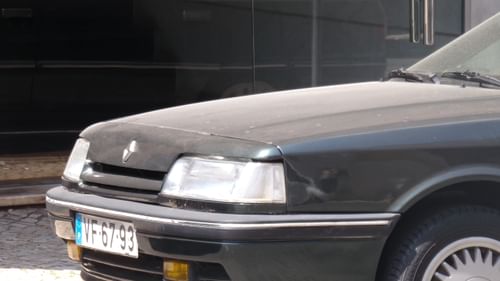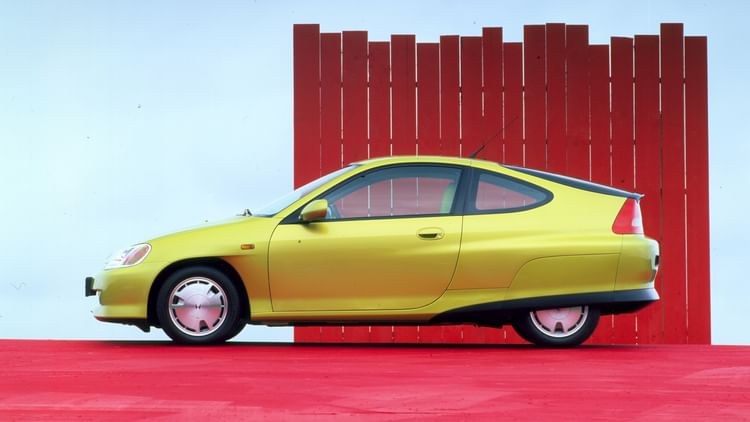
You need to start somewhere. When the Honda Insight went on sale in 2000, it was the first mass-produced petrol-electric hybrid to go on sale in the UK, beating the Toyota Prius to market by a matter of weeks. In a parallel universe, the Insight is the brand generic for the hybrid vehicle and is loved by everyone from greenwashed celebs to sandal-wearing eco fanatics.
Leaving the well-worn clichés aside, the Honda Insight was a quantum leap forward for the green car industry. More interesting to look at than the Prius, far nicer to drive, and in the right hands, significantly more economical. It would be unwise to view the Insight as Honda’s Betamax and the Prius as Toyota’s VHS, but while one was a commercial failure, the other became a household name.
The story starts in 1997, when Honda unveiled the radical J-VX concept at the Tokyo motor show and Toyota launched the Prius in its domestic market. Hybrid vehicles are taken for granted in 2021, but things were very different at the end of the 1990s, with Honda and Toyota locked in a battle for pioneering status supremacy. Toyota took an early lead by taking the Prius to its domestic market in 1997, but Honda’s gaze into the future was more exciting. The J-VX looked like a fun-size preview of the Lamborghini Murciélago, with squint-and-you’ll-see-it hints of the future Honda CR-Z. Officially, the Value-X Light Sports concept was Honda’s vision of a 21st century sports car. ‘A pleasure to drive. Environmentally responsible. Honda’s sports future is previewed in this hybrid light sports car,’ it proclaimed. Power was sourced from a 1.0-litre three-cylinder VTEC engine with an Integrated Motor Assist (IMA) hybrid system – the first time this had been shown to the public. Highlights included dual airbags, ABS, HID headlights, glass roof and one-piece bucket seats. Unlike the Insight, it even had a pair of admittedly small rear seats.
The Insight entered production in December 1999, having made its debut in road-ready form at the Frankfurt motor show in September. Honda didn’t want Nissan and Hyundai to hog the limelight with the new versions of the Almera and Accent. It looked less like a car and more like something a cyclist would stick on their head at a velodrome, with the body shaped to slice through the air with maximum aerodynamic efficiency. Honda effectively turned the wind tunnel into a design studio, handcrafting clay models, millimetre by millimetre. This painstaking attention to detail resulted in, amongst other things, the development of rear wheel skirts; an aerodynamic nose, windscreen and A-pillars; low-turbulence 14-inch alloy wheels; a Kamm back; and a tapered body with 110mm narrower track at the rear wheels. The result was a drag coefficient of just 0.25, an impressive figure, even today. With the exception of the recyclable composite front wings, bumper skirts and rear wheel skirts, the teardrop body was made from lightweight aluminium to save weight. Ultra-low rolling resistance tyres, compact suspension design, plastic fuel tank and lightweight seats were just some of the other measures used to save weight. Such an obsession with shedding weight meant that an Insight owner would think twice before visiting a drive-thru for a Big Mac. Just order a Diet Coke, because it weighs less. Probably.
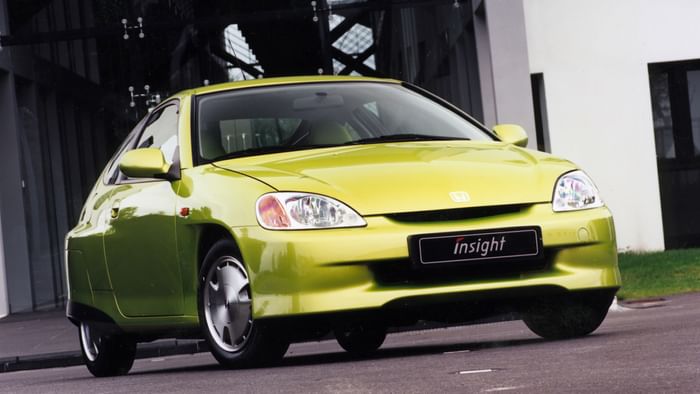
With a CD of 0.25 and a kerbweight of just 850kg, the Insight was more slippery and lighter than some sports cars. It’s worth noting that the Lotus Elise S2, introduced a year after the Insight in 2001, weighed a comparatively portly 860kg. It meant that the Insight was surprisingly fun to drive, although squeezing too many ‘YOs’ out of the lively VTEC engine would put a big dent in the overall economy. Honda claimed a combined figure of 83.1mpg, although some owners have seen 100mpg on an economy drive. CO2 emissions of 80g/km might seem a bit ‘meh’ in 2021, but the Insight launched into an era when anything below 150g/km was impressive and above 200g/km was socially acceptable. Even the Toyota Prius 1.5 VVTi Hybrid boasted a figure of 114g/km. The cleverness and relevance of the Honda Insight in the march towards a greener future cannot be overstated. It seems laughable that some magazines were pushing turbodiesels as suitable alternatives to the Insight and Prius. Honda Insight? More like the Honda Hindsight. It’s a wonderful thing.
Hidden beneath the surprisingly conventional-looking but aerodynamic nose was the beating heart of a 1.0-litre three-cylinder lean burn VTEC IMA powertrain with no fewer than 300 patents to its name. Without the electric motor assist, the Insight driver could call upon 68bhp at 5700rpm and 66lb ft of torque at 4800rpm. With IMA, these figures increased to 76bhp at 5700rpm and 83lb ft at 1500rpm respectively. That low-end torque was equivalent to that of a contemporary Honda Civic 1.5-litre petrol engine, so the Insight felt surprisingly spritely. The hybrid system offered the best of both worlds: a wide, flat torque curve at high speeds, and a boost of electricity at low and mid-range engine speeds. The ultra-thin brushless motor was connected directly to the engine’s crankshaft and powered by a 144-volt nickel-metal hybrid battery pack. Its engine stop-start system worked with effortless efficiency – again, technology we take for granted in 2021. It should come as no surprise to learn that Honda’s 995cc IMA hybrid was named International Engine of the Year in 2000, and Best Fuel Economy/Green Engine in 2000, 2001 and 2002.
It’s best to view the Honda Insight as a forerunner to the modern breed of mild hybrid vehicles, rather than the so-called ‘self-charging‘ hybrids (not our words, Carol) in the mould of the Toyota Prius. In the Insight’s case, IMA works like a little turbocharger to boost performance, rather than to provide all-electric running. This was the primary difference between the Insight and Prius, although the days of both forms of electrification are numbered by the impending UK ban on the sale of new petrol and diesel vehicles.
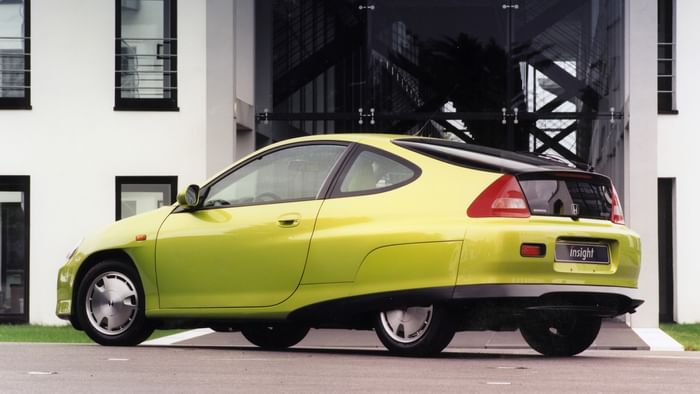
There are two questions: is the Honda Insight a future classic and should it be viewed as a success or failure? The first one is easy to answer, although one could argue that it’s less of a future classic and more one for the here and now. It’s an example of a manufacturer’s dogged pursuit of low emissions and maximum fuel economy in the days before Hollywood celebrities used green vehicles to boost their public persona. ‘It’s all about the polar bears, darling,‘ as an actor from the comfort of the leather seats in his private jet probably said.
The second question is a little tougher. Honda reportedly lost money on every Insight it sold, which is hardly surprising when you consider the level of investment. Does this matter? For Honda, the Insight was more likely a business card for hybrid technology; an example of what could be achieved using lightweight materials and aerodynamics to improve the efficiency of a car with a petrol engine. In this sense, the Insight was an overwhelming success; its fuel economy and CO2 figures still hold up today in the era of electrification.
It was criticised for being too expensive; you could buy a mid-range Honda Accord 2.0-litre SE for the Insight’s £15,500 launch price. That’s hardly comparing sandals with sandals, but that was a lot of cash for a two-seater with sci-fi looks and the kind of ride quality that’ll have you reaching for a cushion. A lightweight cushion, obviously – think of the kerbweight.
Honda sold 17,020 Insights during its 1999-2006 production run, with 250 arriving on these shores (others have entered the UK as grey imports). Toyota managed to shift 123,000 units of the first-generation Prius before production ended in 2003, by which time it had cemented its position as the default hybrid vehicle and the car many enthusiasts love to hate. Thanks to its oddball looks, engineering brilliance, digital dashboard and exotic heritage (it was built in the same factory as the NSX, don’t you know), the Honda Insight is the acceptable face of hybrid motoring. It’s the backstreet deli to the Toyota’s big chain supermarket; the indie album to the mainstream pop anthem. It’s the 1.0-litre hybrid you want to own.
This article first appeared in issue 2 of Classic.Retro.Modern. magazine.
